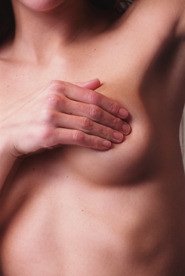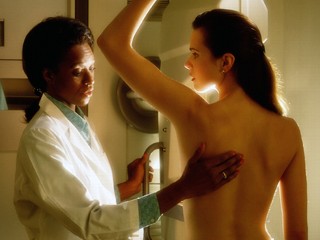 We all know that October is Breast Cancer Awareness month. I’m sure many of you are probably sick and tired of reading about it and seeing pink everywhere, so I’ll keep this to the point.
We all know that October is Breast Cancer Awareness month. I’m sure many of you are probably sick and tired of reading about it and seeing pink everywhere, so I’ll keep this to the point.
I’m not going to tell you to buy products that donate to Breast Cancer Research, nor am I going to tell you which Breast Cancer Organizations are the best ones to donate to. Instead, I’m going to talk about the real issue at hand – Breast Cancer.
Is there a right way to check your breasts for early signs of cancer? Many women remain confused as experts now say there is no evidence that rigorous monthly “self-examination” — widely recommended in the United States — reduces breast cancer deaths. Plus, it can lead to unnecessary biopsies.
Two large studies looking at a total of more than 388,000 women found that death rates from breast cancer were the same among women who rigorously self-examined as those who did not, while there were almost twice the number of biopsy operations in the self-examination group.
According to some experts, the best way for a woman to check her breasts is not to follow a strict examination routine, but to get to know what is normal, and feel them regularly for signs of any changes.
Sources:
Many women are under the illusion that if they religiously do self breast examinations and regular mammograms that they will “catch it” early. What many women don’t realize is that such prodding around may actually contribute to your risk of breast cancer, not to mention all the unnecessary biopsy when something “new” is found in the breast.
I’m not saying self breast exams aren’t a good idea, you just need to chill out about it. Doing it once a month on the same day is totally unnecessary. Try to practice “Breast Awareness”. Simple knowing how your breasts normally feel and noticing if there are any unusual changes. No highly regimented schedule is needed.
Simply be aware of what’s normal for you so you can recognize anything out of the ordinary. What should you keep an eye out for?
- A new lump or hard knot found in your breast or armpit
- Dimpling, puckering or indention in your breast or nipple
- Change in the size, shape or symmetry of your breast
- Swelling or thickening of the breast
- Redness or scaliness of the nipple or breast skin
- Nipple discharge, especially any that is bloody, clear and sticky, dark or occurs without squeezing your nipple.
- Changes in your nipple such as tenderness, pain, turning or drawing inward, or pointing in a new direction
- Any suspicious changes in your breasts
So just relax and be aware. No need for having a freak out over your boobs! Now you’re probably wondering…
Are Mammograms a Good Idea?
Aside from breast self-exams, the other mainstay in the U.S. medical system is the mammogram. The U.S. Preventive Services Task Force recommends women get a mammogram every year or two after age 40.
But I strongly disagree.
The benefits of mammograms are highly controversial, while the risks are well established. Back in 2001, around the time that U.S. health officials widened the use of mammograms to included women over 40 (previously it was only women over 50), a Danish study published in The Lancet revealed some startling data.
The study concluded that previous research showing a benefit was flawed and that widespread mammogram screening is unjustified.
Specifically, the Danish researchers argued that earlier studies in Europe and North America were improperly randomized and that they used a faulty definition of breast cancer survival.
Meanwhile, the technology carries a first-time false positive rate of up to 6 percent. False positives can lead to expensive repeat screenings and can sometimes result in unnecessary invasive procedures including biopsies and surgeries.
Just thinking you may have breast cancer, when you really do not, focuses your mind on fear and disease, and is actually enough to trigger an illness in your body. So a false positive on a mammogram, or an unnecessary biopsy, can really be damaging.
Not to mention that women have unnecessarily undergone mastectomies, radiation and chemotherapy after receiving false positives on a mammogram.
Source: Mercola.com
Yes, breast cancer is a serious thing and many lives have been saved by early detection, but I think there is a huge deception along the general public about breast cancer and the causes and treatment of it.
If you look into it more, you find that Mammograms can actually cause cancer. So yes, you are increasing your chances of finding the breast cancer by getting the Mammogram, but you are also increasing your chances of getting it!

Well for starters mammograms expose your body to radiation that can be 1,000 times greater than that from a chest x-ray, which poses risks of cancer. Mammography also compresses your breasts tightly, and often painfully, which could lead to a lethal spread of cancerous cells, should they exist.
“The premenopausal breast is highly sensitive to radiation, each 1 rad exposure increasing breast cancer risk by about 1 percent, with a cumulative 10 percent increased risk for each breast over a decade’s screening,” points out Dr. Samuel Epstein, one of the top cancer experts.
Source: Mercola.com
Make sure you do a lot of research before you go and take those Mammograms and decide whether it’s right for you. If you have a long line of breast cancer history in your family, you may want to get yearly mammograms to catch it early, especially if it’s almost inevitable.
However, if you are in the low-risk category for breast cancer, like non smoker, you don’t use birth control, you have given birth and breastfed for at least 6 months and you have no family history of breast cancer, then you probably don’t need to partake in yearly Mammograms.
Don’t worry, there are other alternatives! Mammograms aren’t the only way to detect breast cancer…
Most physicians continue to recommend mammograms for fear of being sued by a woman who develops breast cancer after which he did not advise her to get one. But I encourage you to think for yourself and consider safer, more effective alternatives to mammograms.
The option for breast screening that I most highly recommend is called thermography.
Thermographic breast screening is brilliantly simple. It measures the radiation of infrared heat from your body and translates this information into anatomical images. Your normal blood circulation is under the control of your autonomic nervous system, which governs your body functions.
Thermography uses no mechanical pressure or ionizing radiation, and can detect signs of breast cancer years earlier than either mammography or a physical exam.
Mammography cannot detect a tumor until after it has been growing for years and reaches a certain size. Thermography is able to detect the possibility of breast cancer much earlier, because it can image the early stages of angiogenesis (the formation of a direct supply of blood to cancer cells, which is a necessary step before they can grow into tumors of size).
Source: Mercola.com
So make sure you do a lot of research first because doctors don’t always tell you everything you need to know and blind trust isn’t always the best medicine.



